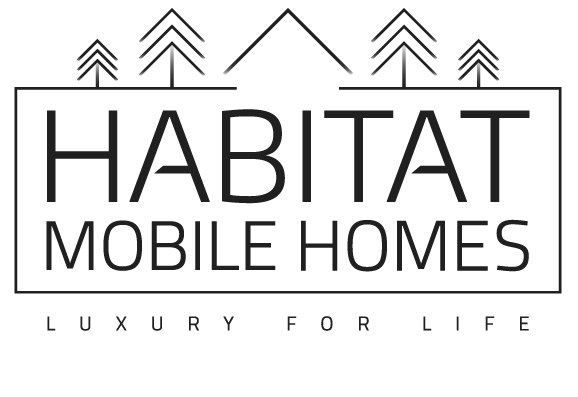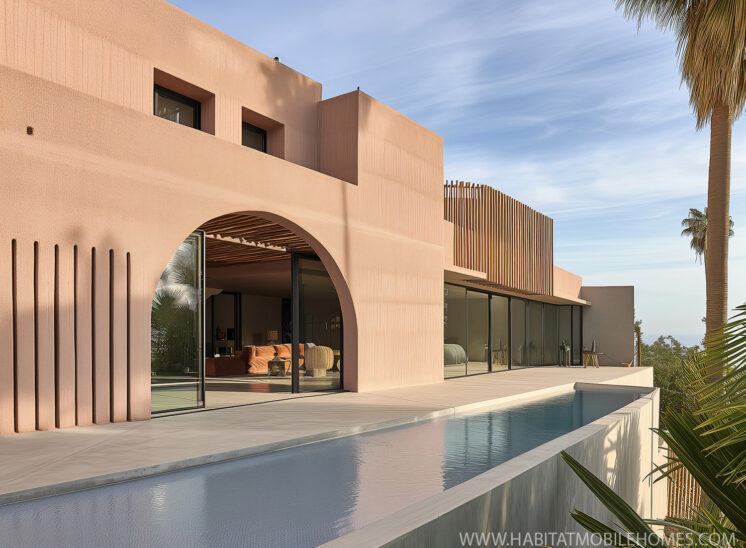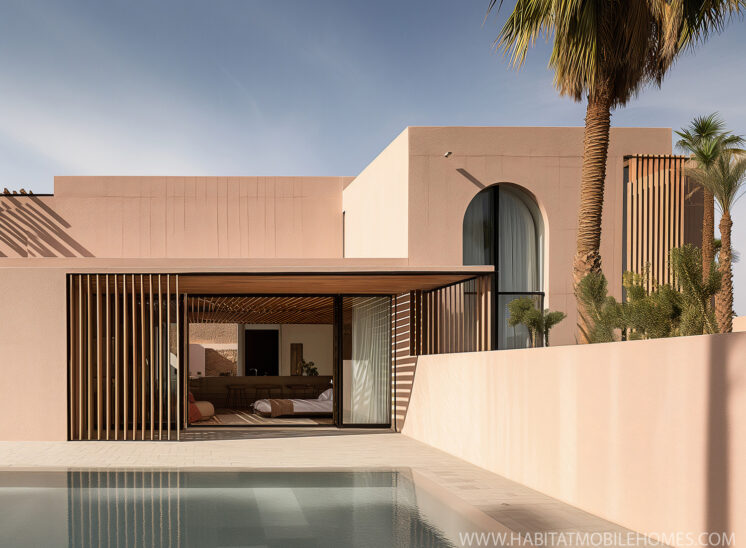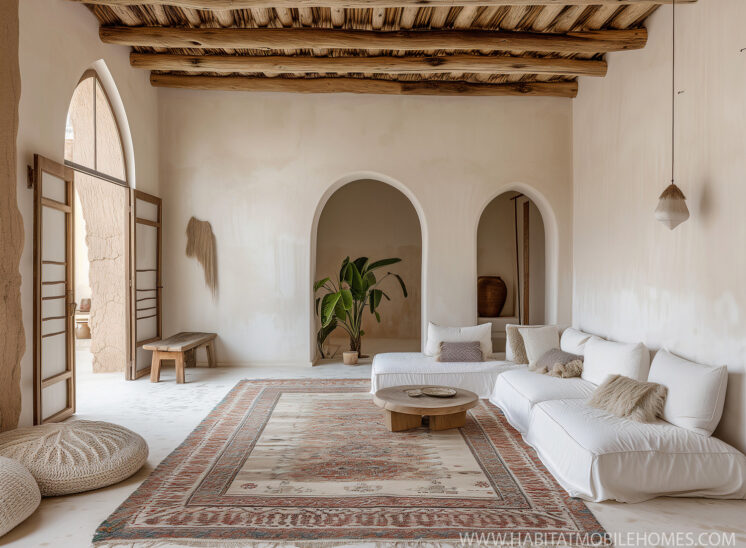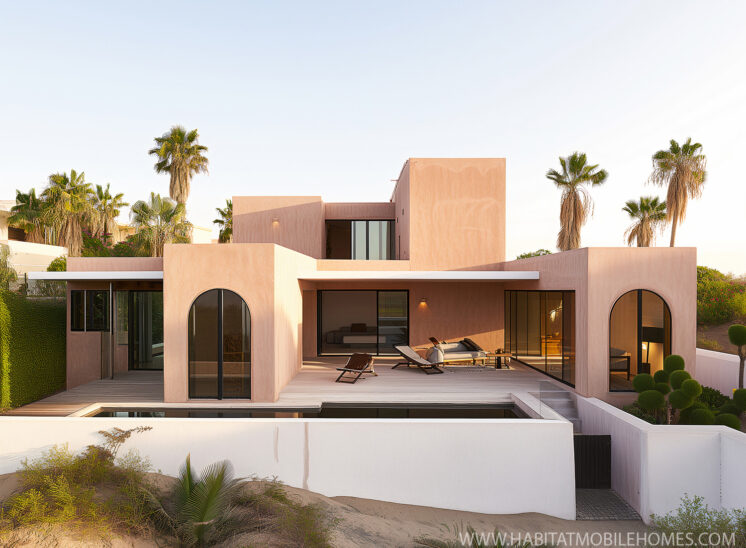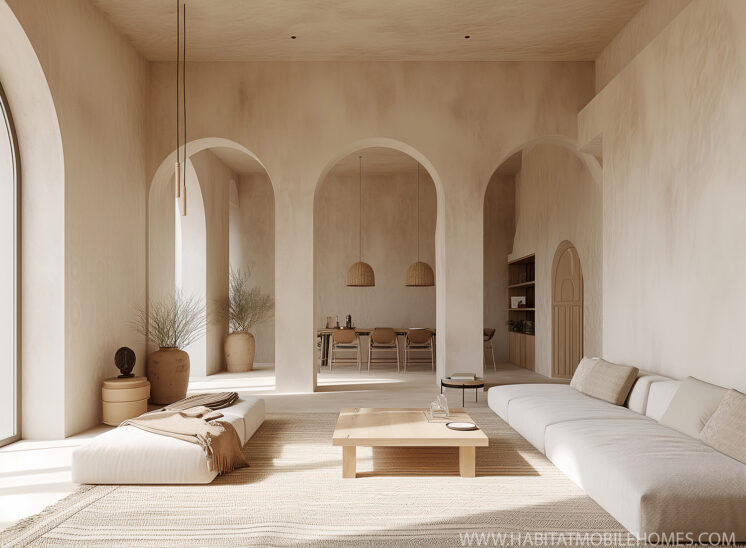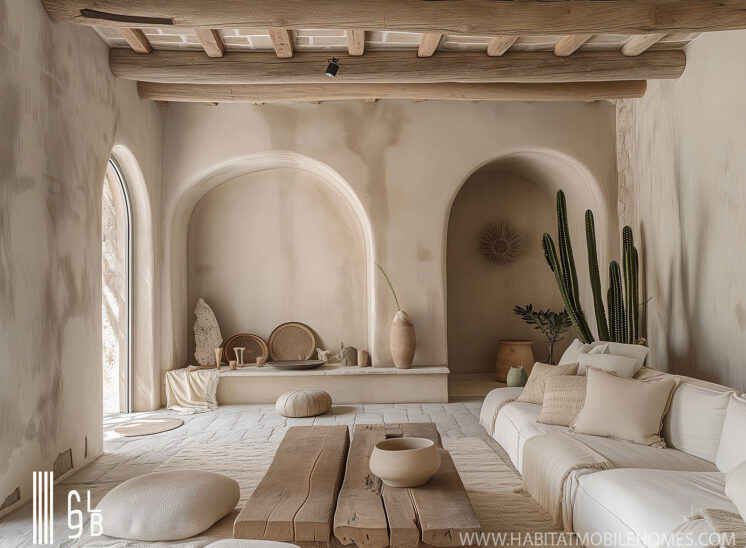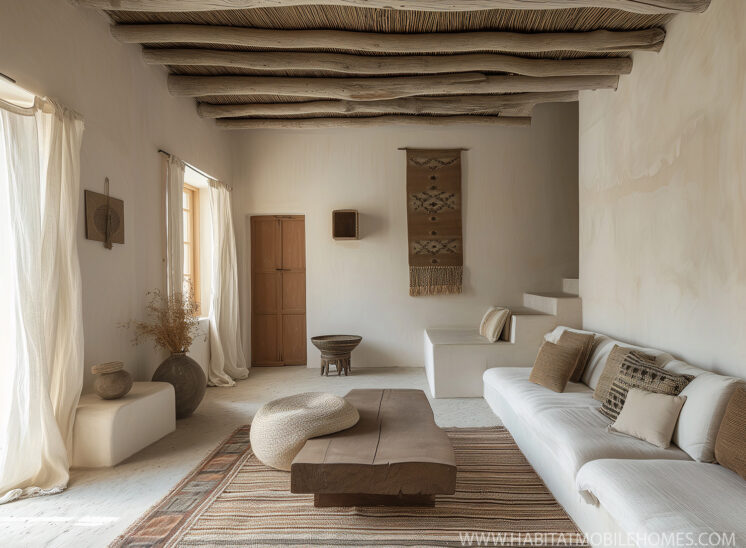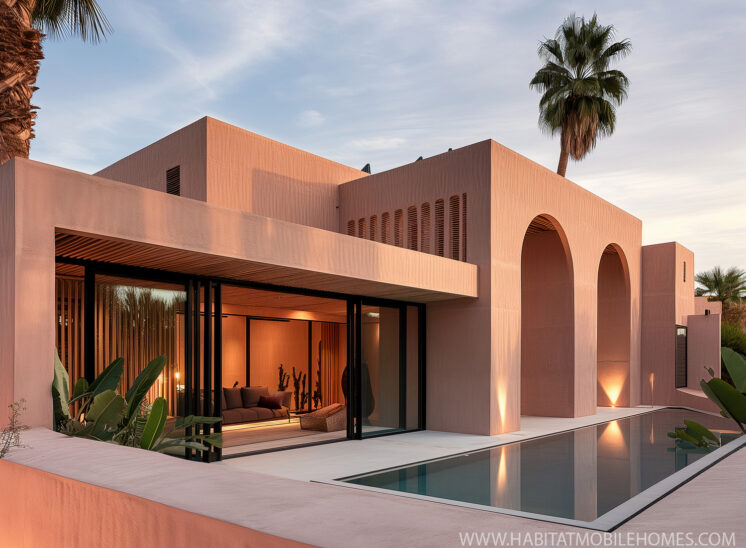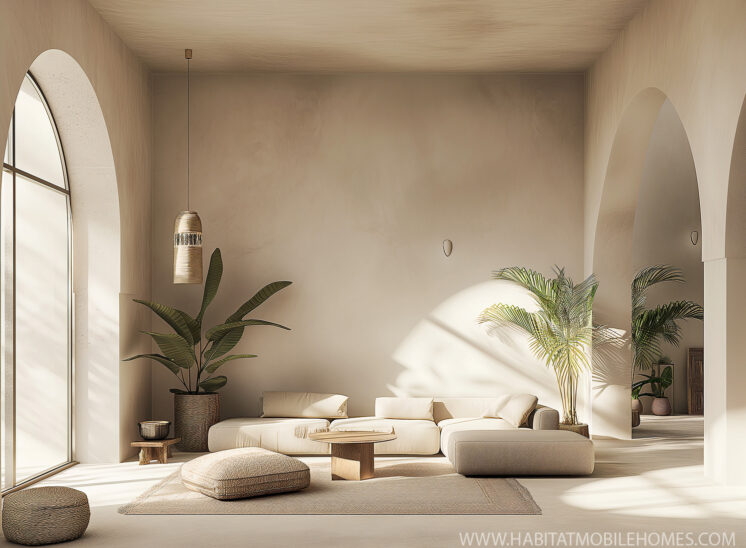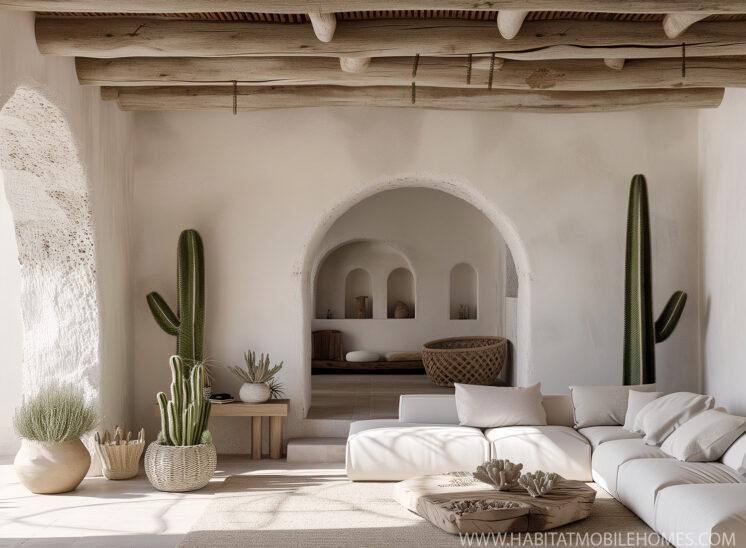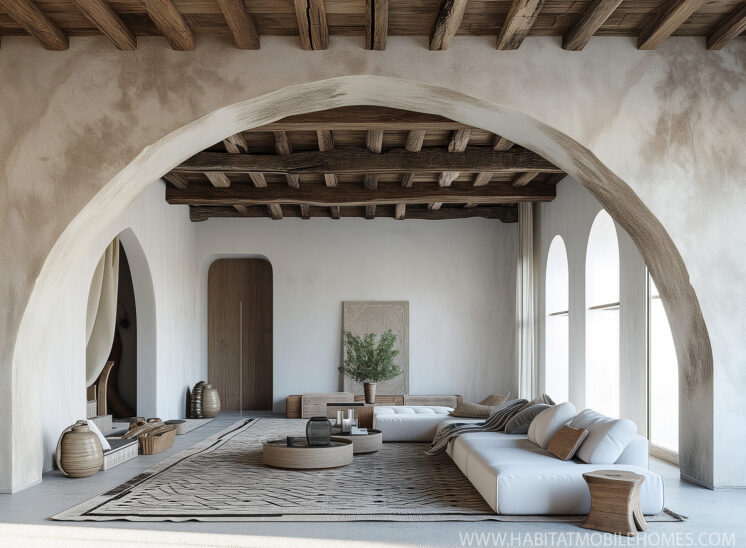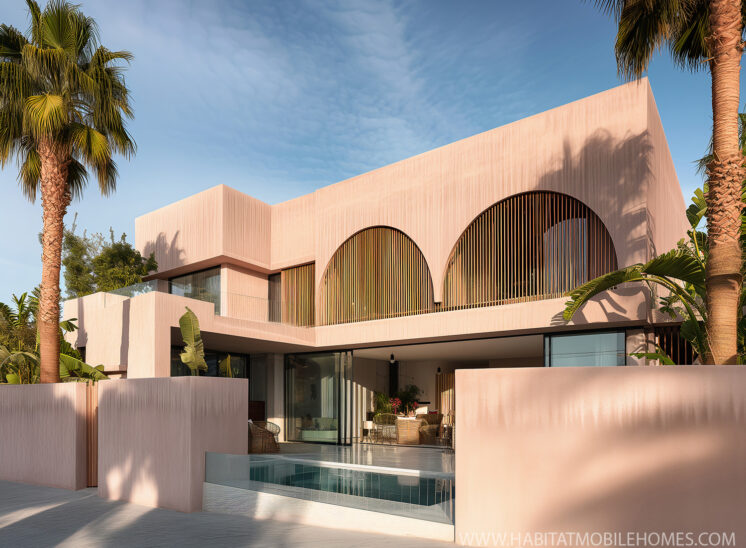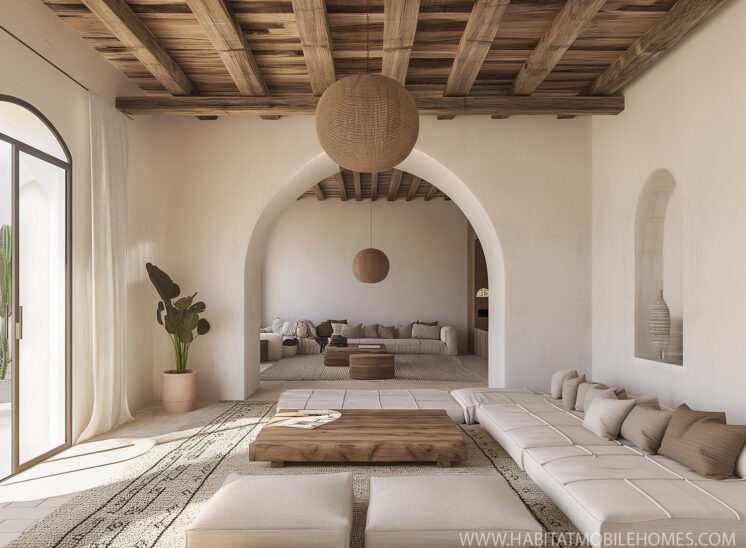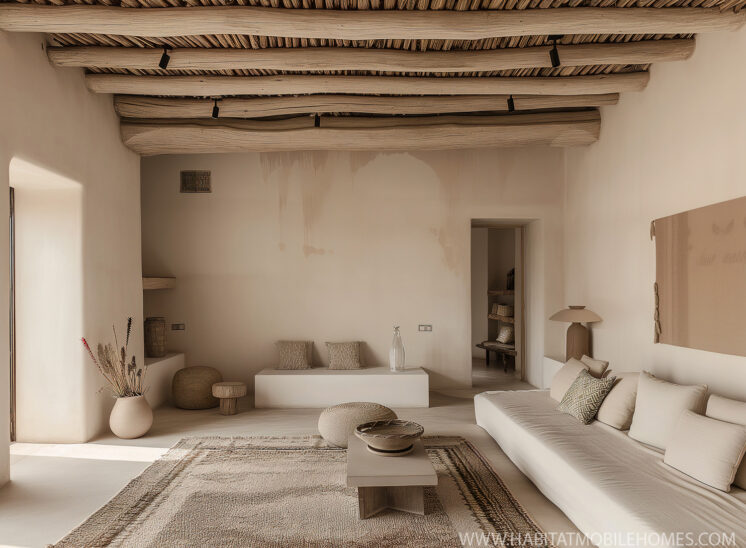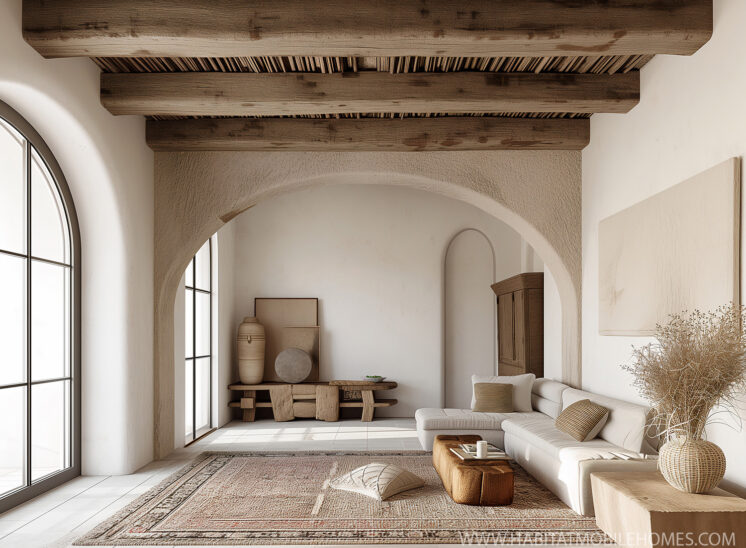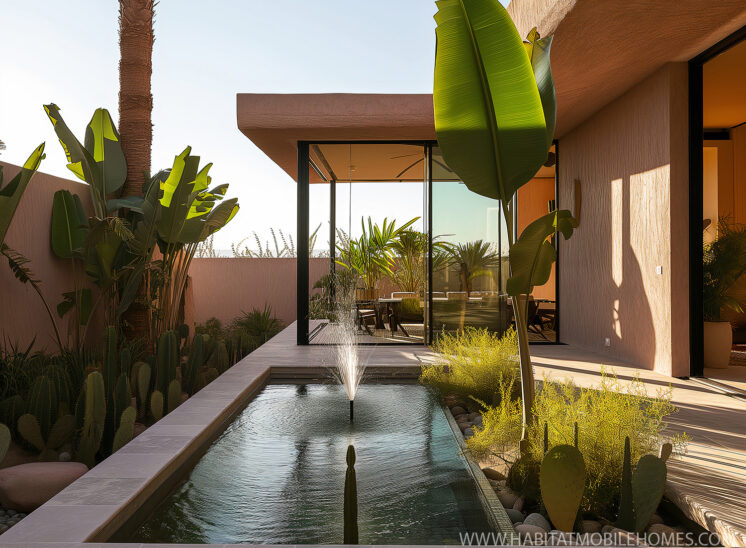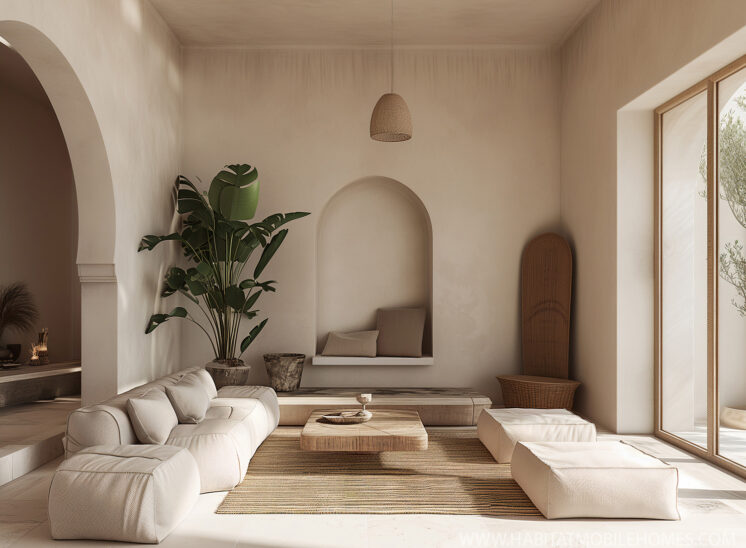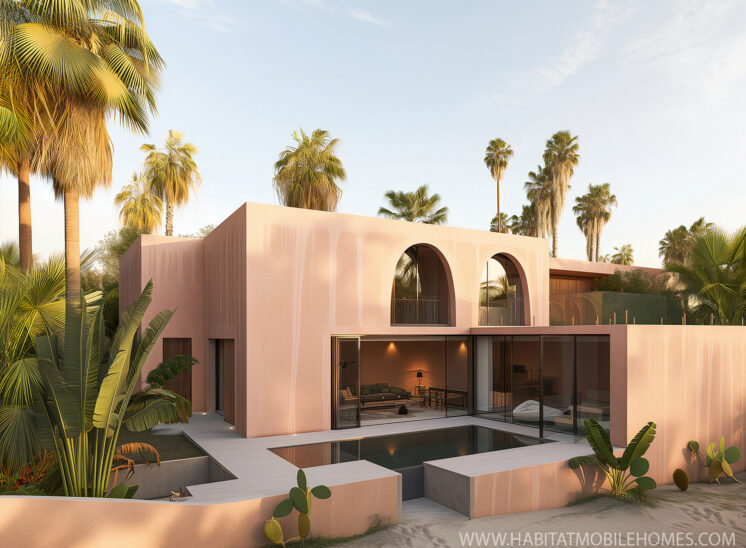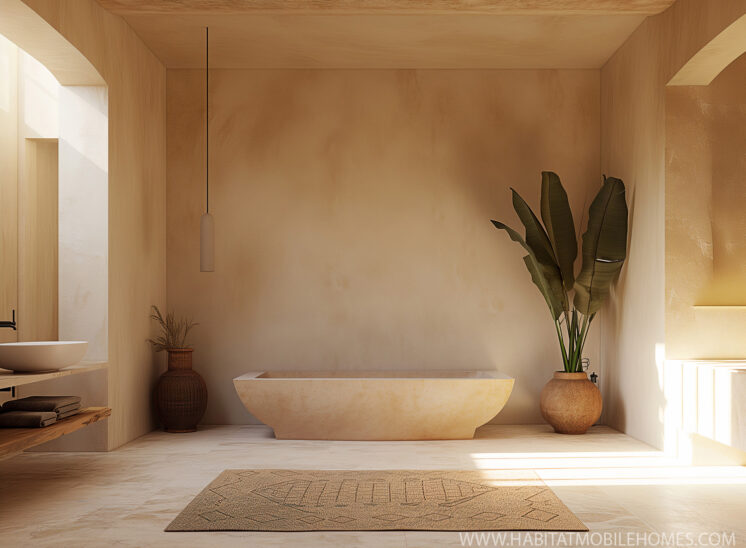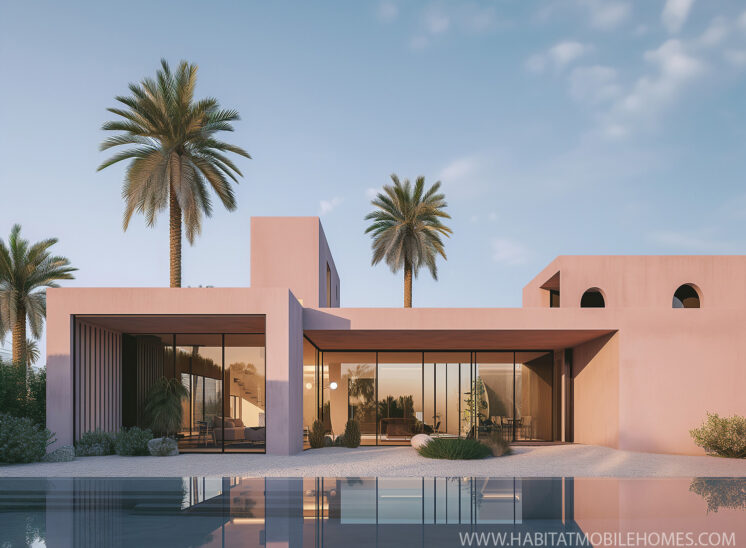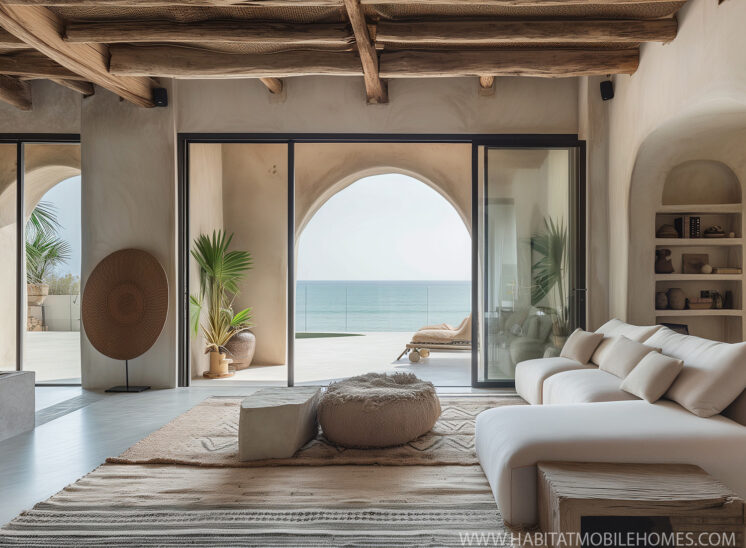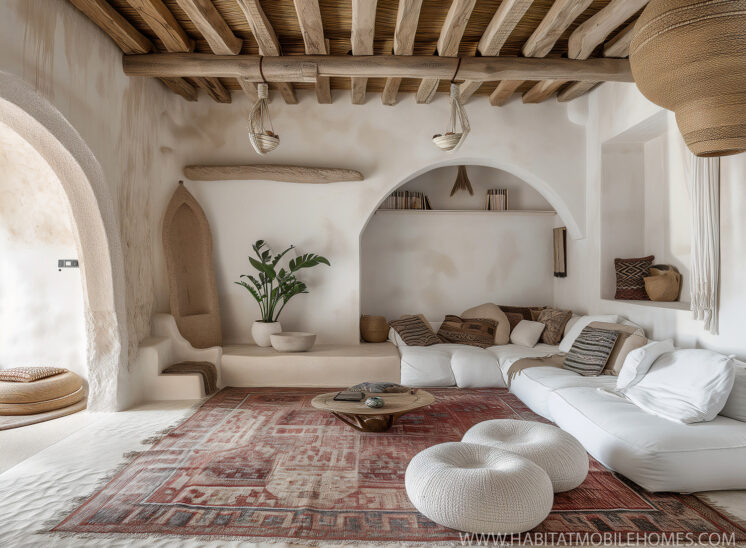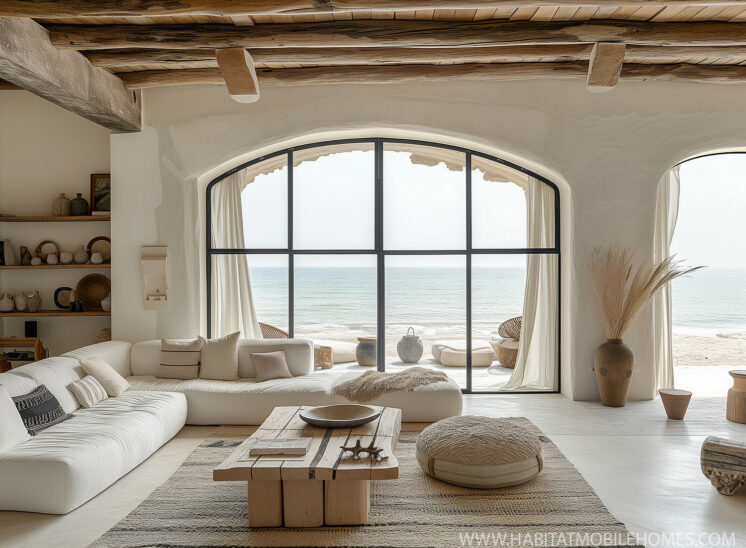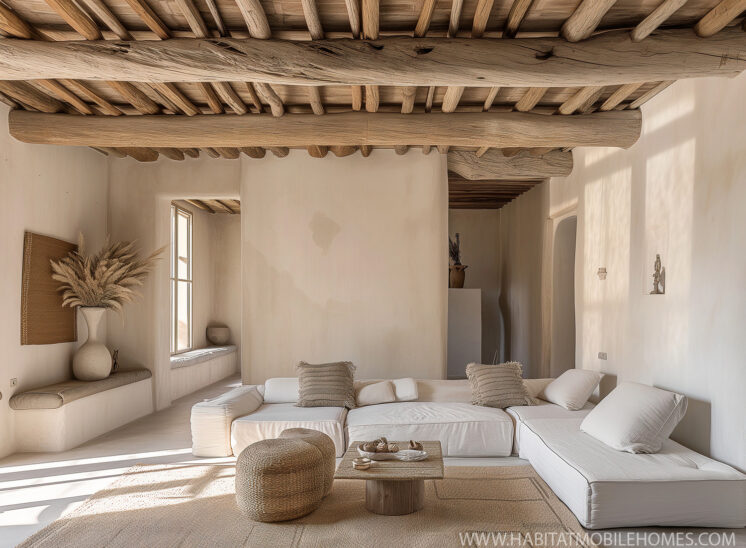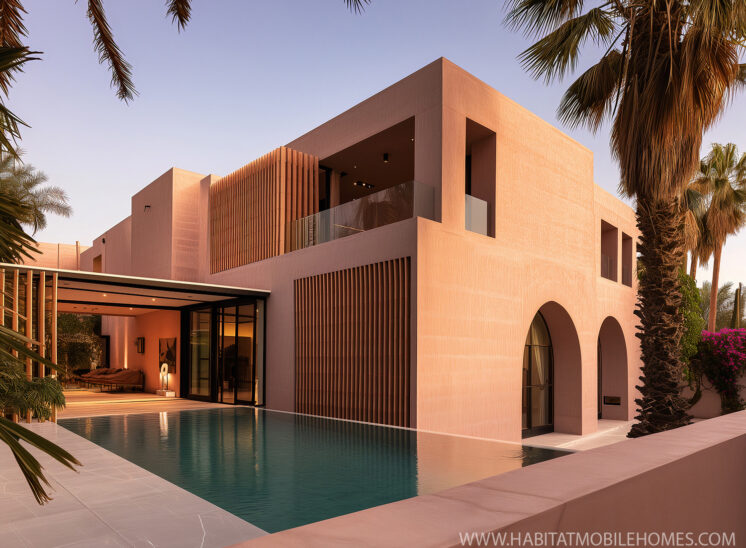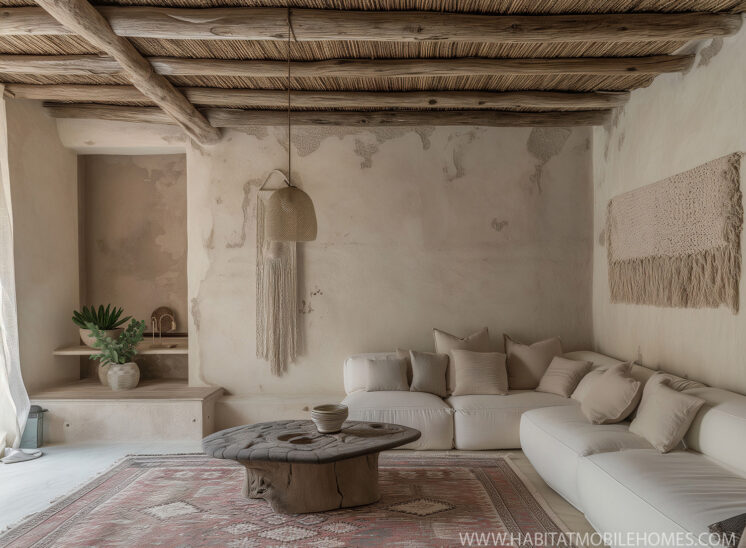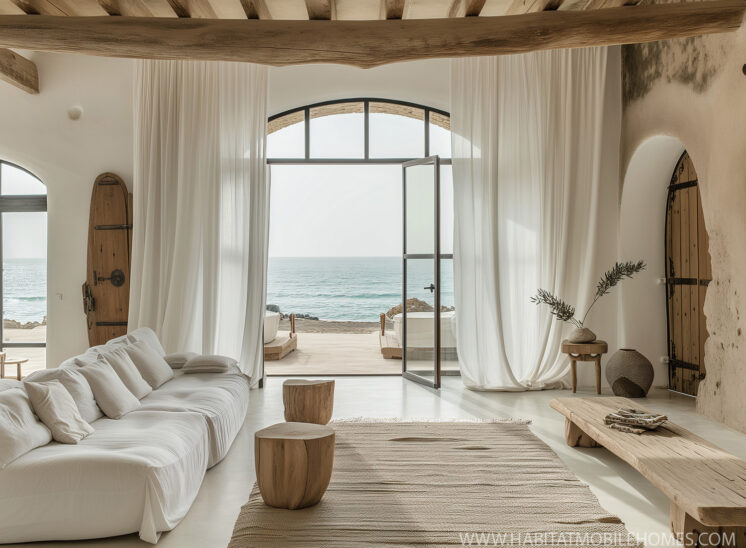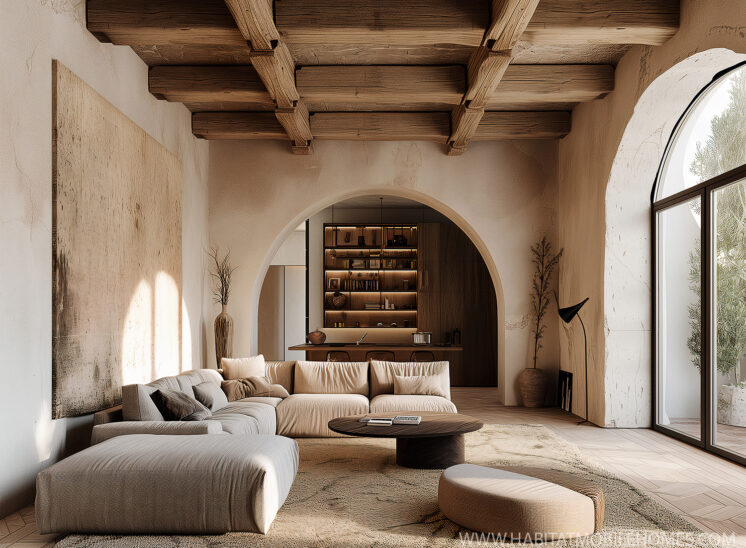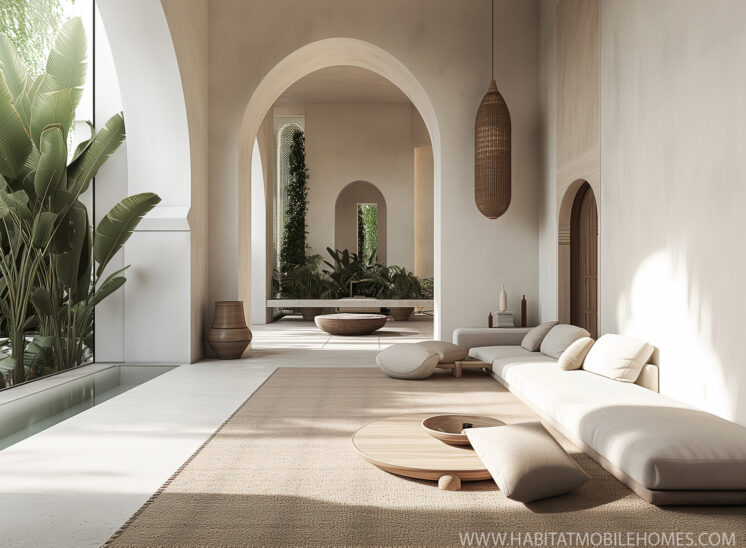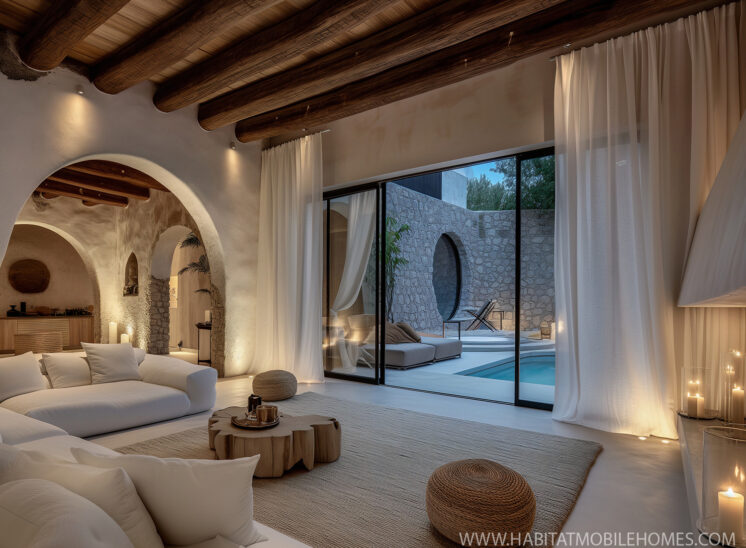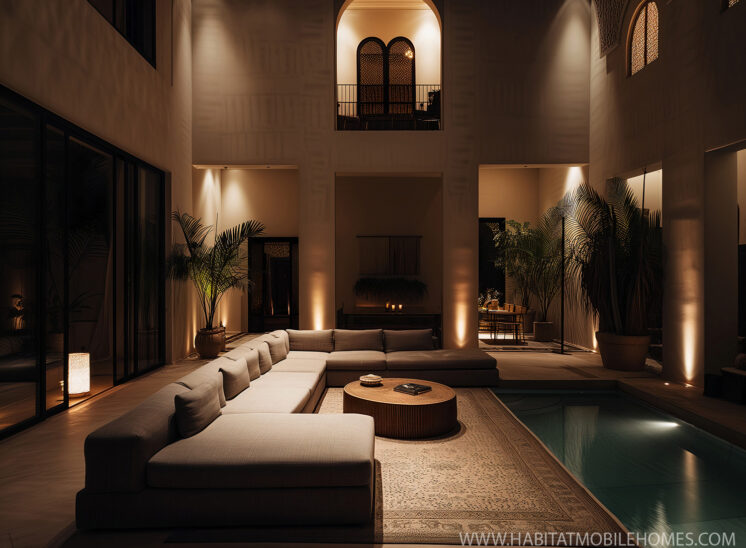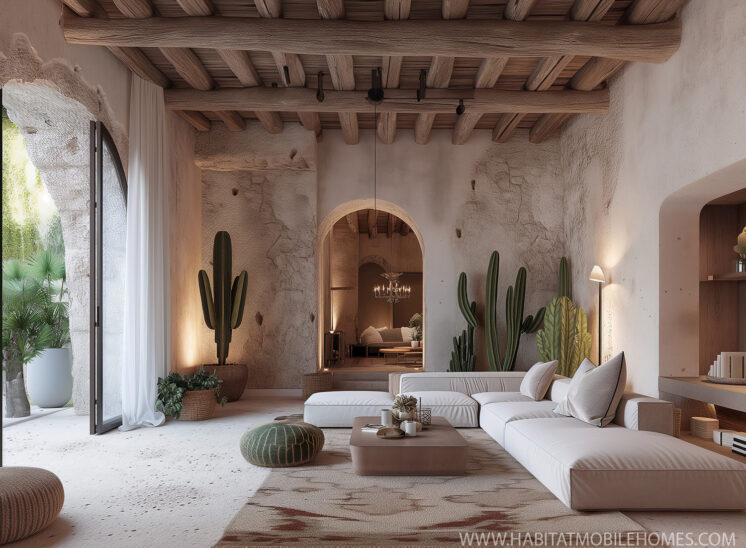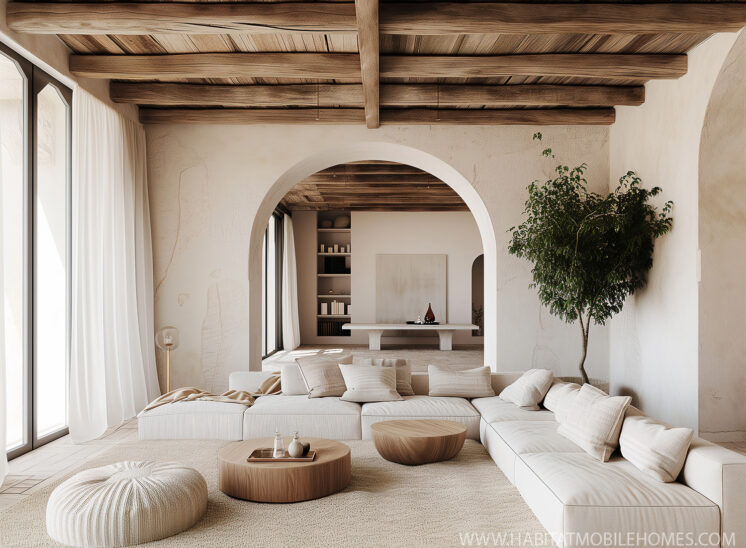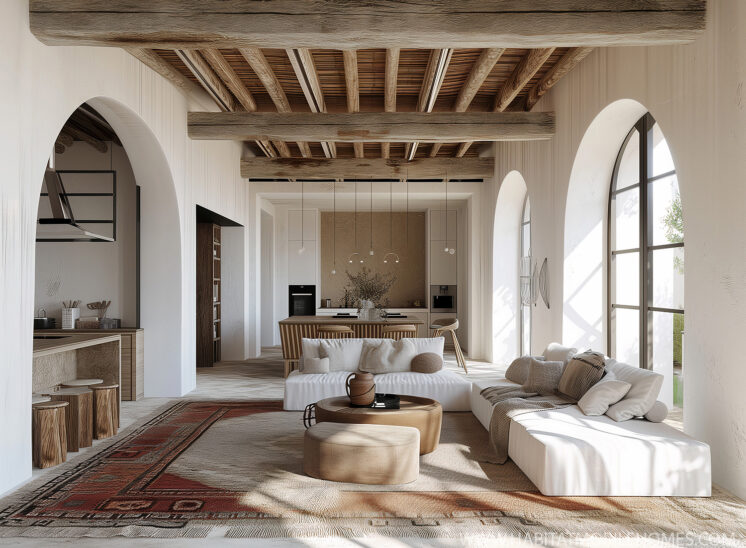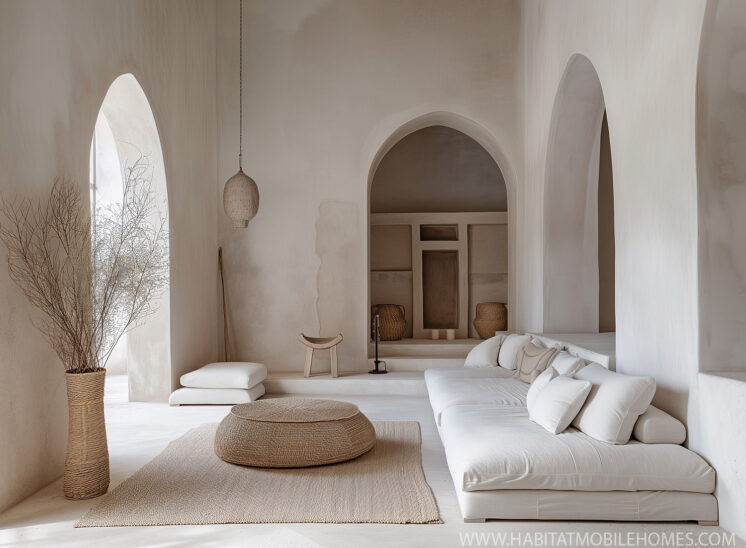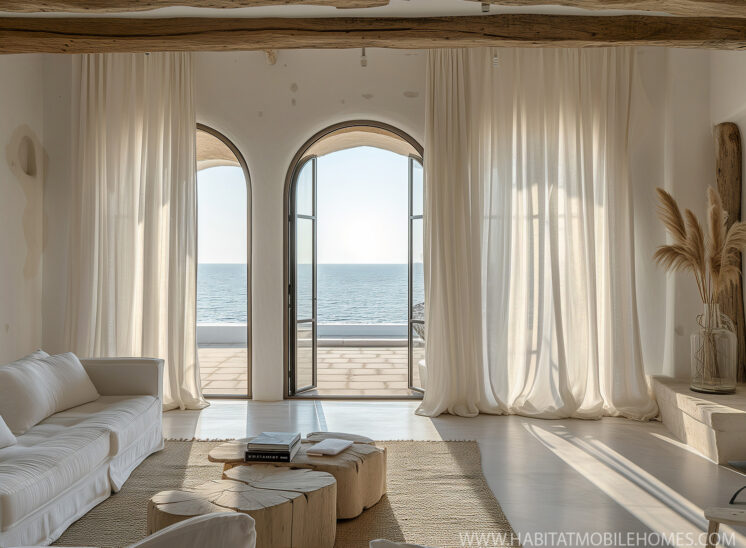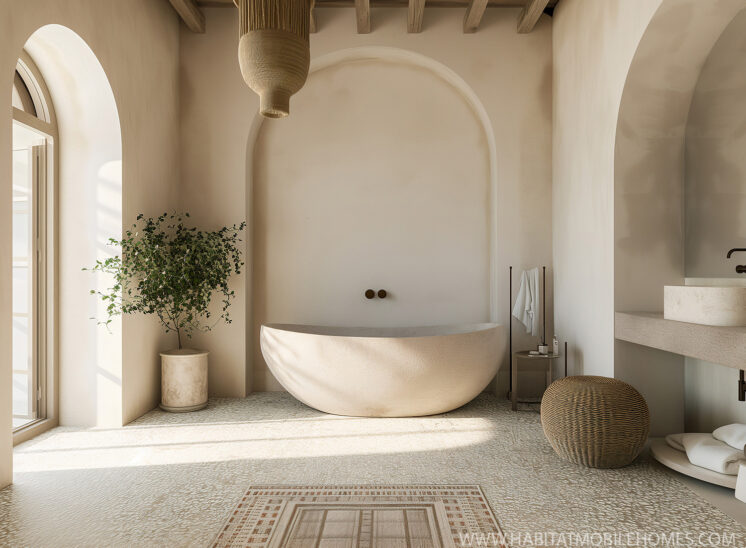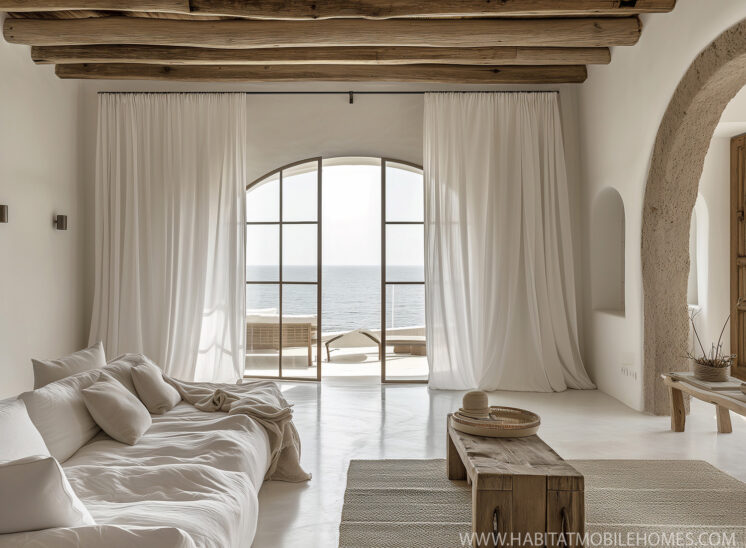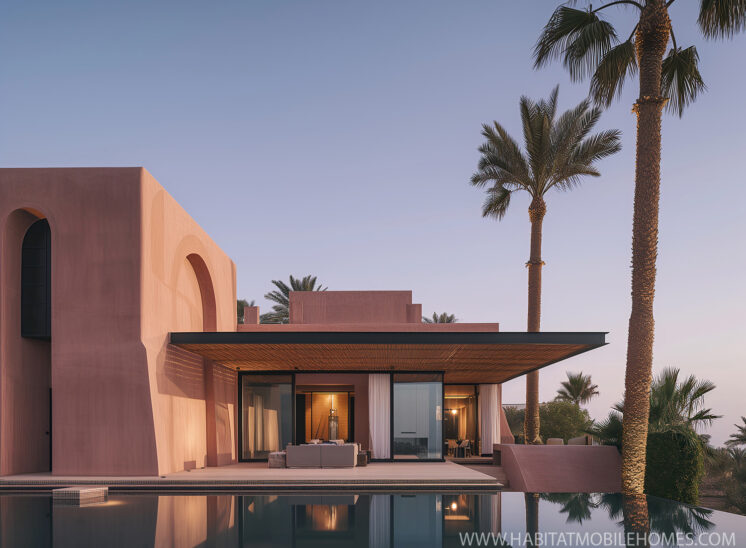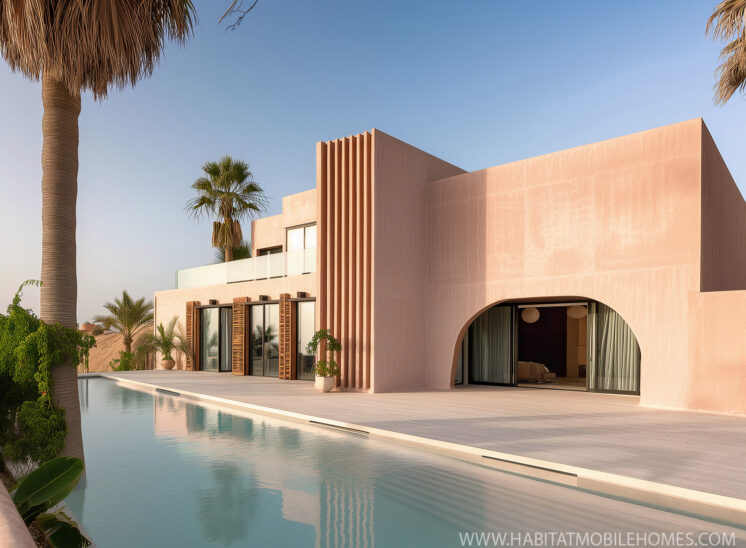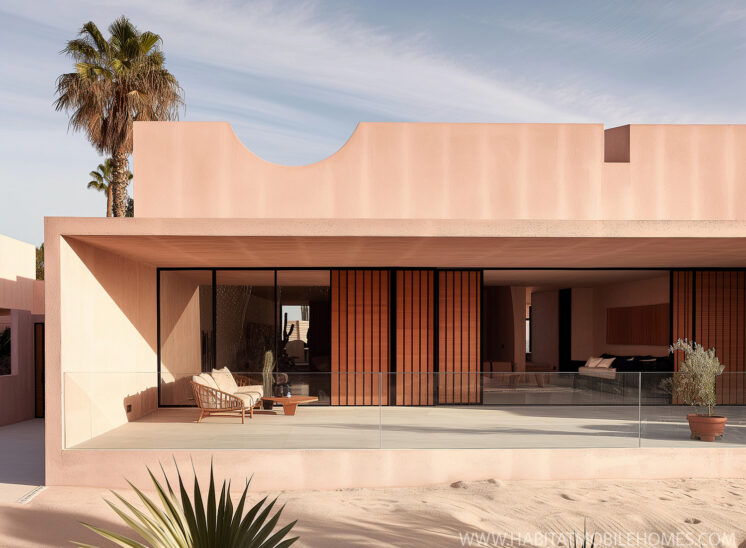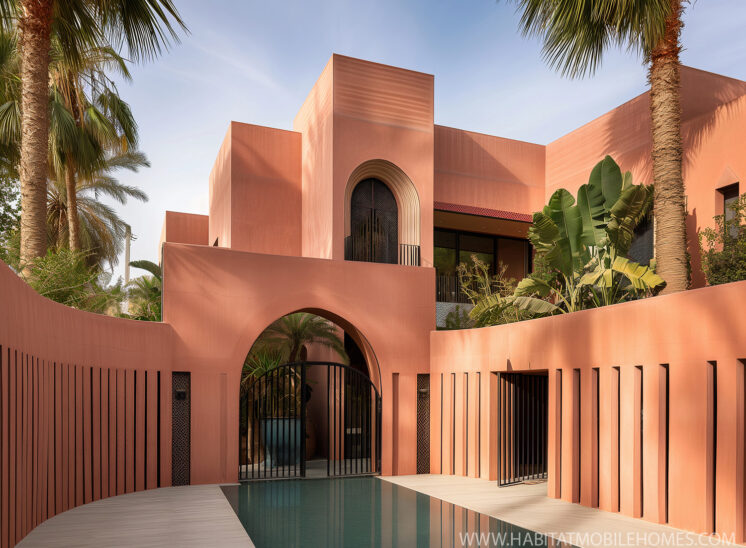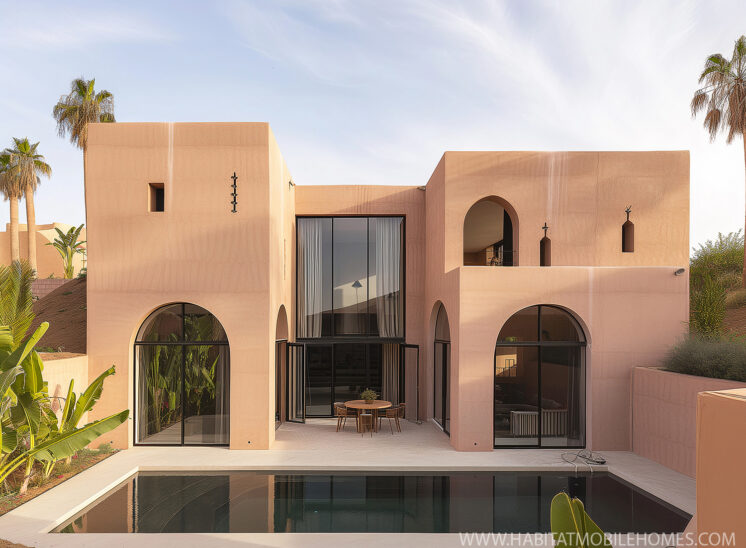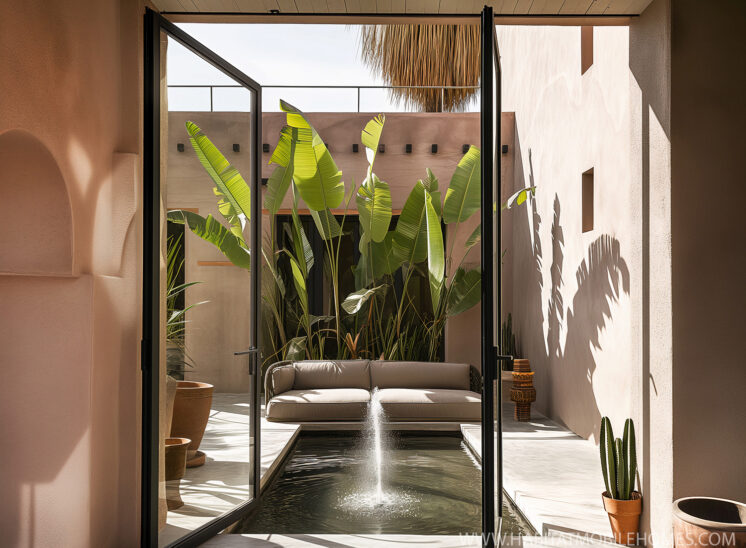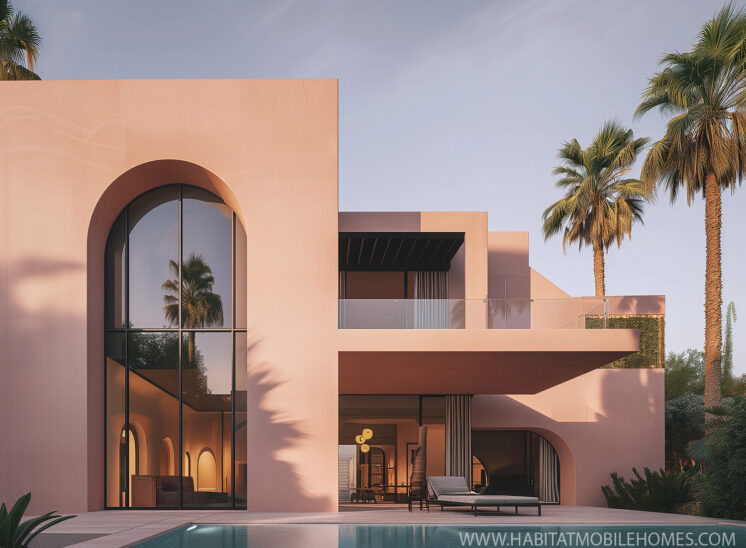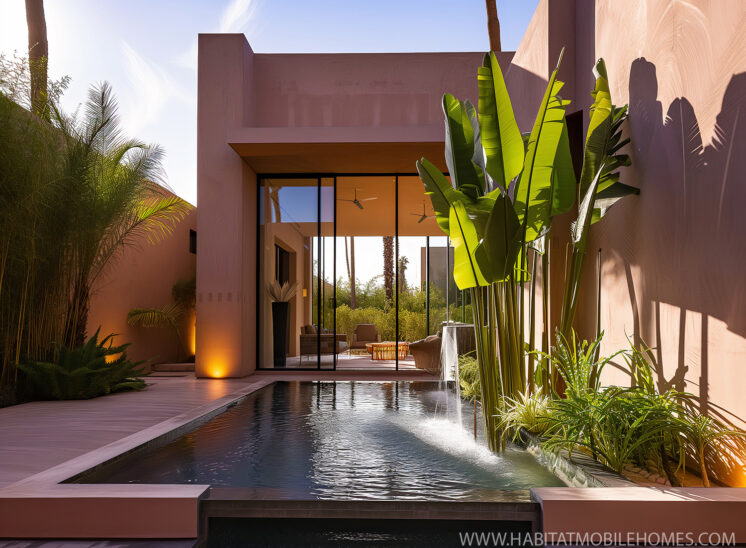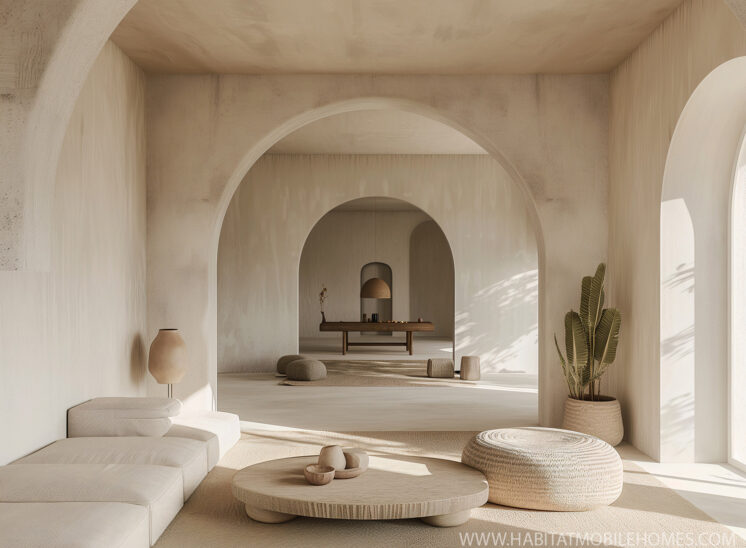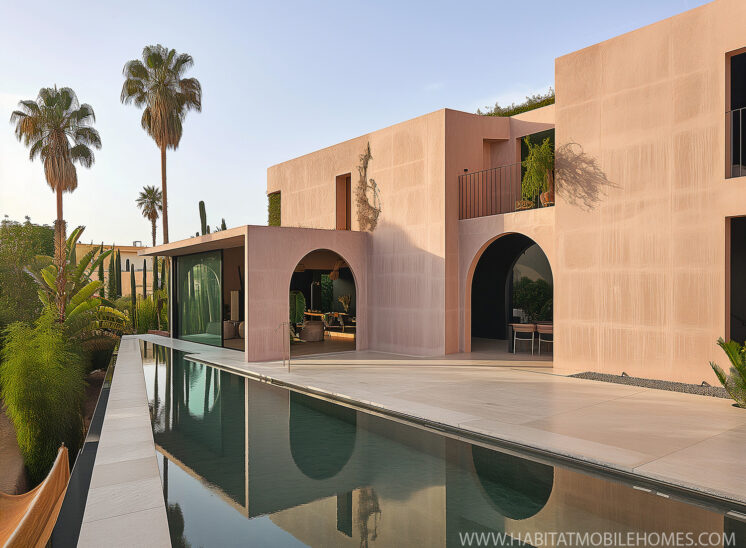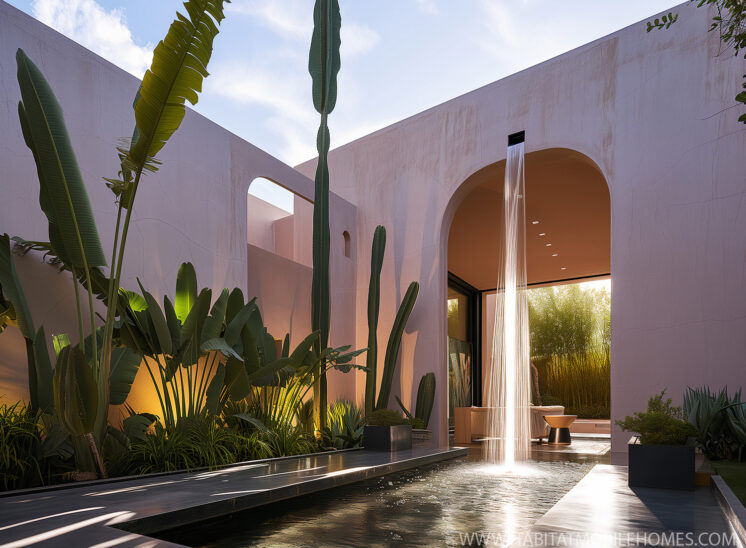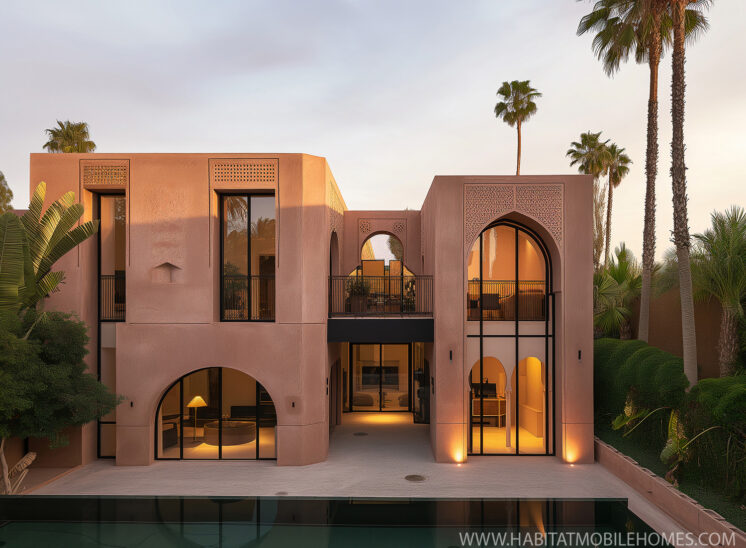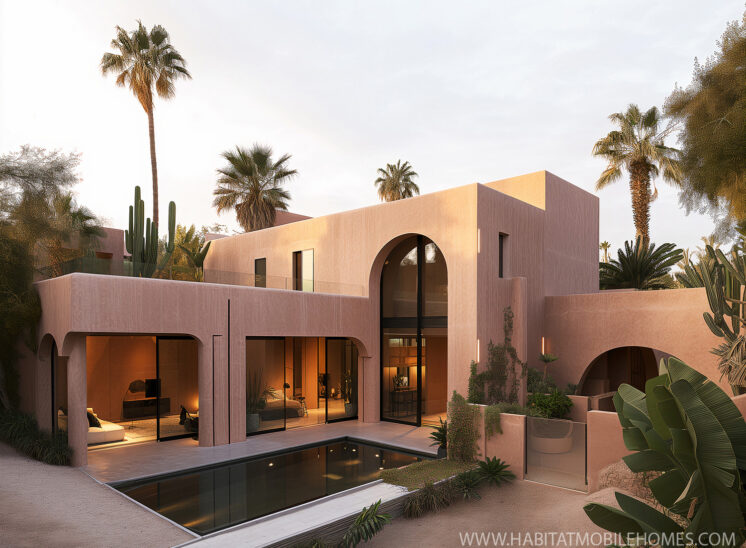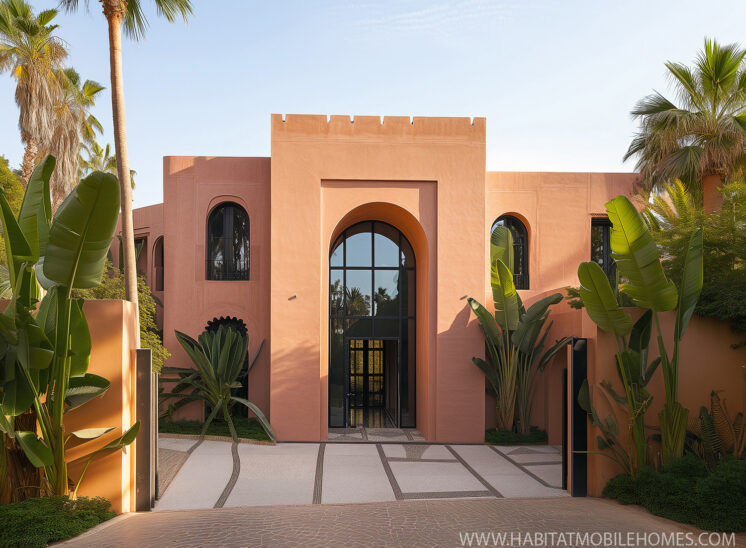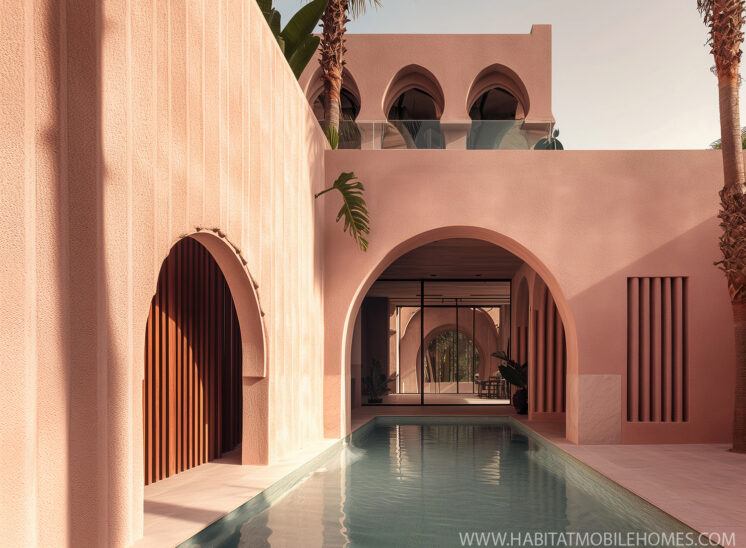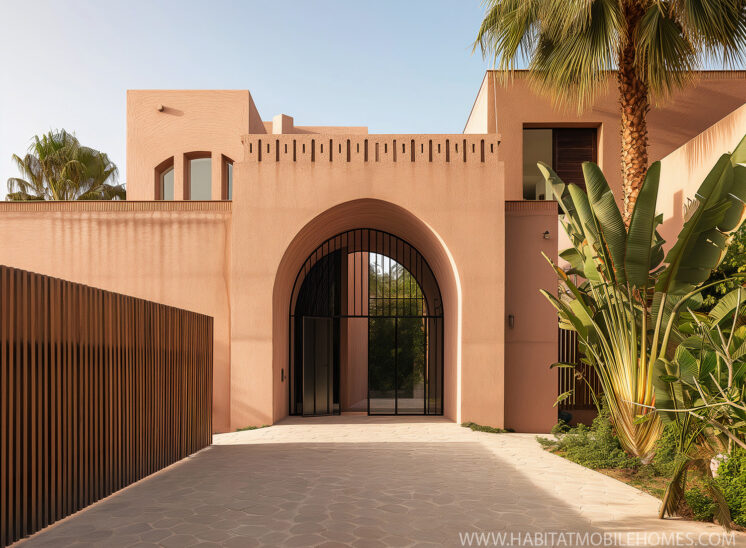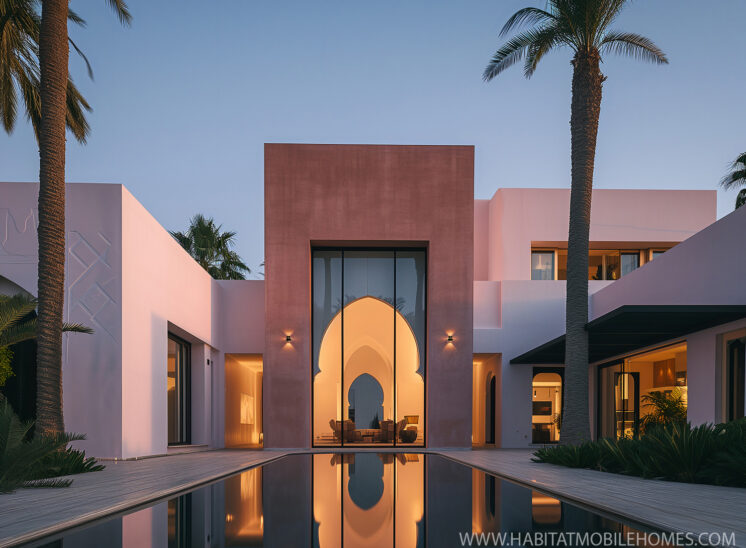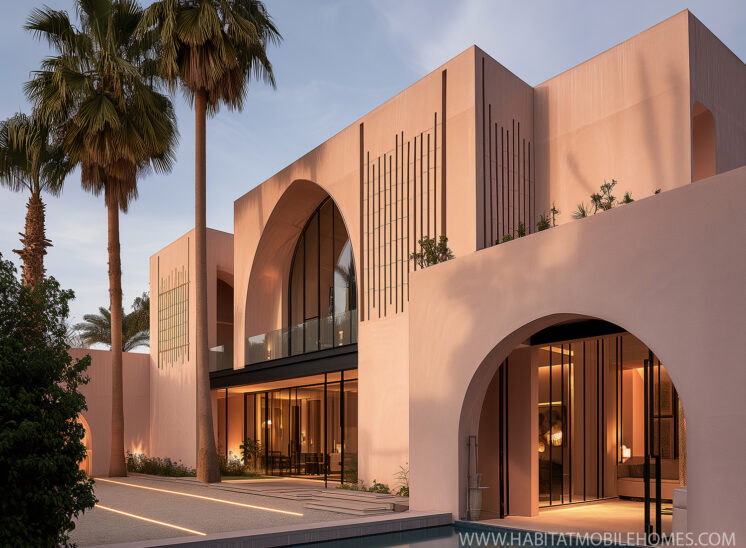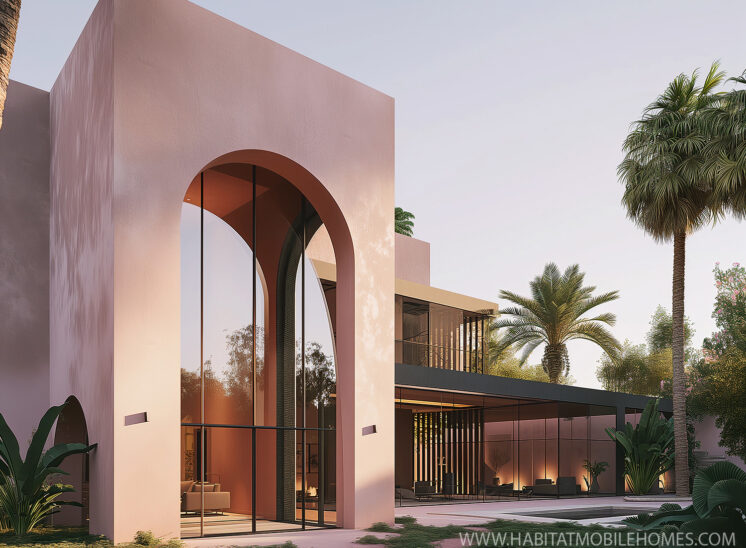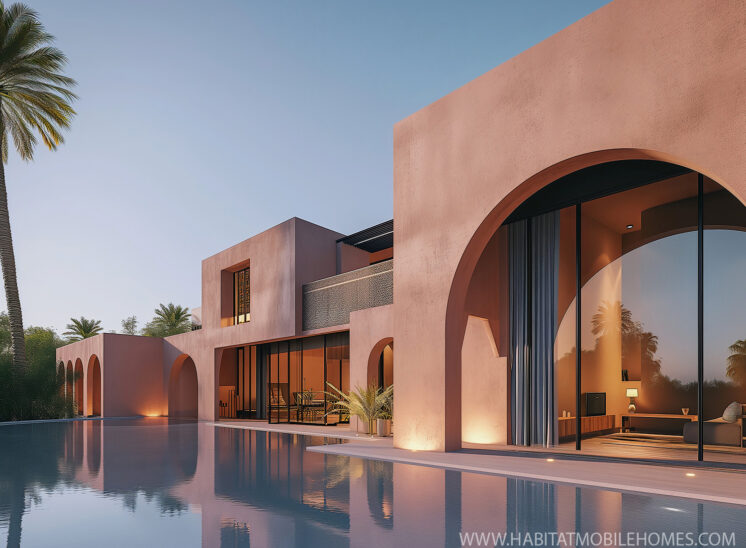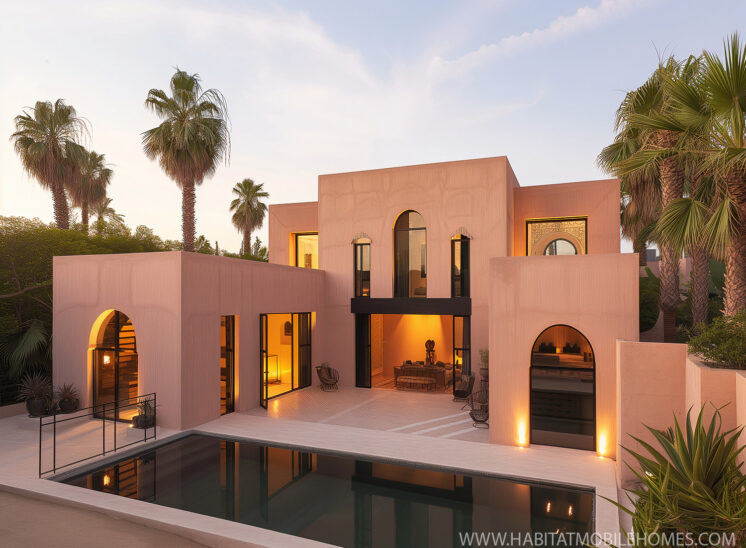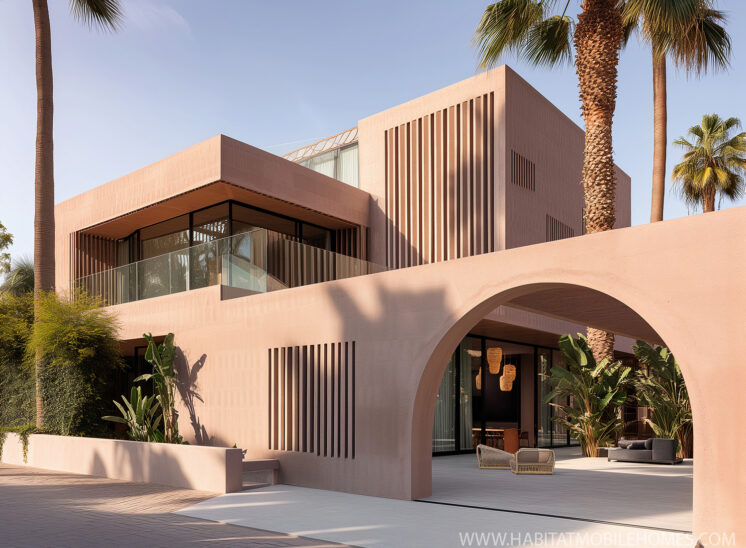Sahara Rose Villas
These buildings blend the traditional Moroccan aesthetic with contemporary design, making them an ideal representation of the Sahara Rose Villas name. The use of pinkish clay or earth tones links them to the Saharan landscape, while the modern architecture suggests a fusion of heritage and new, luxurious living spaces. The presence of lush greenery and water features, like the swimming pool, adds to the oasis feel, which is very much in line with the Moroccan penchant for courtyard gardens and indoor-outdoor living spaces.
Timber Frame Kits: The Future of Moroccan-Inspired Modern Architecture
In the vibrant streets of Marrakech to the sweeping dunes of the Sahara, Moroccan architecture tells a story of cultural heritage, art, and a profound understanding of the natural environment. Today, a revolutionary approach to homebuilding is bringing a modern twist to these ancient traditions through the use of bespoke timber frame kits, merging sustainability with the timeless aesthetics of Moroccan design.
Crafting Tradition with Innovation
The timber frame kit is a marvel of modern engineering, offering precision, efficiency, and sustainability. These prefabricated kits are crafted in controlled factory environments, ensuring high quality and consistency, and later assembled on-site, which significantly reduces construction time and impact on the environment. This innovative method of construction aligns with the traditional Moroccan philosophy of harmony with nature, offering a modern solution that still resonates with the ancient ethos.
Moroccan Architecture: A Language of Design
Moroccan architecture is a sensory-rich language with its own dialects of color, form, and texture. The iconic "Marrakech pink" walls, intricate tile work, and ornate carvings are some of the elements that tell the story of a rich cultural heritage. This language is not static; it is a living conversation between the past and present, and timber frame kits are adding a new vocabulary to this dialogue.
Sahara Rose Villas: A Case Study
Take the Sahara Rose Villas, for example. These structures, inspired by the rosy hues of desert sunsets, demonstrate how Moroccan motifs can be seamlessly integrated into modern designs. The villas showcase large archways and keyhole windows that trace their lineage back to traditional Moroccan palaces and riads, while the open, airy spaces speak to a modern sensibility of light and flow.
The Symbiosis of Style and Substance
The fusion of Moroccan style with timber frame construction is not merely aesthetic; it's a symbiosis of style and substance. The wood used in these kits is a renewable resource, and the energy efficiency of timber frames means homes stay cool in the scorching heat of a Moroccan summer and warm during the cooler nights, reducing the need for artificial heating and cooling.
Embracing the Past, Building the Future
As we look towards the future of architecture, it is clear that the principles of Moroccan design - from the use of color to the integration of nature - have a significant role to play. The Sahara Rose Villas are a testament to the potential of this cultural synergy, embodying a respect for tradition within their very framework while pushing the boundaries of contemporary design.
The Quintessence of Moroccan Architecture: A Bullet-Point Journey
Moroccan architecture is a tapestry woven from the threads of multiple cultures, climates, and materials. Here's a succinct exploration of its most defining features:
- Vibrant Color Palettes: Utilizing earthy tones such as the distinctive "Marrakech pink," alongside bold blues and greens.
- Ornate Geometric Patterns: Zellige tilework and complex geometric designs are central to Moroccan aesthetics.
- Courtyard Centricity: Traditional homes, or riads, feature central courtyards that serve as the heart of domestic life.
- Fluid Indoor-Outdoor Spaces: Moroccan homes often blur the lines between inside and outside, embracing the natural environment.
- Intricate Plasterwork: Delicate and elaborate plaster carving, known as 'Tadelakt', adorns walls and ceilings.
- Woodwork and Carvings: Cedar and other woods are intricately carved for doors, ceilings, and furniture.
- Arches and Doorways: Keyhole arches and ornate doorways serve as architectural focal points.
- Water Features: Reflecting pools and fountains are common, symbolizing life and tranquility.
- Lush Gardens: Riads often contain gardens with abundant vegetation, providing a sensory retreat.
- Terraces and Rooftops: Flat roofs and terraces are used as additional living spaces, taking advantage of the mild climate.
- Sustainability: Thick walls made of local materials provide natural insulation against the heat and cold.
These elements form the basis of what is a rich and enduring architectural heritage, which continues to inspire and adapt to modern building practices.
Building Dreams on Moroccan Soil: Key Considerations for Your Self-Build House Project
Embarking on a self-build house project in Morocco is not just an investment in a structure, but a foray into a realm where culture, climate, and craftsmanship intersect. This North African kingdom, with its rich history and diverse landscapes, offers an inspiring canvas for building a personal haven. Here are the essential considerations to navigate this exciting journey:
- Understanding Local Regulations: Before any ground is broken, familiarize yourself with Morocco's building codes and obtain the necessary permits. This may involve navigating local bureaucracy, so patience and persistence are key.
- Choosing the Right Location: Morocco's geography is varied, from bustling cities to serene mountains and coastal vistas. Each setting has its own logistical and climatic implications for construction.
- Designing with Climate in Mind: With hot summers and cool winters, your design should maximize comfort while minimizing energy use. High thermal mass materials can help regulate indoor temperatures.
- Respecting Cultural Aesthetics: Moroccan architecture is steeped in history. Embracing local design elements will not only pay homage to cultural traditions but may also satisfy any regulatory requirements for historical consistency.
- Sourcing Local Materials: Utilizing local materials like clay, stone, and wood is not just cost-effective; it also ensures that your home reflects the textures of Morocco and supports local industries.
- Incorporating Traditional Elements: Consider traditional features such as riad-style courtyards, ornamental zellige tiles, and water features to infuse a sense of Moroccan authenticity.
- Planning for Water Conservation: Water is a precious resource in Morocco. Integrating systems for rainwater harvesting and water recycling can be environmentally and economically prudent.
- Ensuring Privacy: Privacy is an important aspect of Moroccan culture. Design your home with enclosed courtyards and strategically placed windows to create a private oasis.
- Leveraging Local Craftsmanship: Morocco is home to skilled artisans. Employing local talent for elements like metalwork and wood carving can result in exquisite custom features.
- Budgeting Wisely: Costs can escalate unexpectedly. Ensure you have a detailed budget with a contingency to accommodate unforeseen expenses.
- Seeking Professional Guidance: A local architect or a project manager familiar with Moroccan construction can be invaluable in bridging cultural and language barriers.
- Considering the End Use: Are you building a vacation home, a rental, or a permanent residence? Each has different requirements for durability, maintenance, and amenities.
- Thinking Green: Incorporate sustainable practices and materials to reduce your ecological footprint and possibly save on future utility costs.
By carefully considering these points, your Moroccan self-build can be a fulfilling process that results in a home that is not only a place of residence but a masterpiece of personal expression and a tribute to its cultural context.
